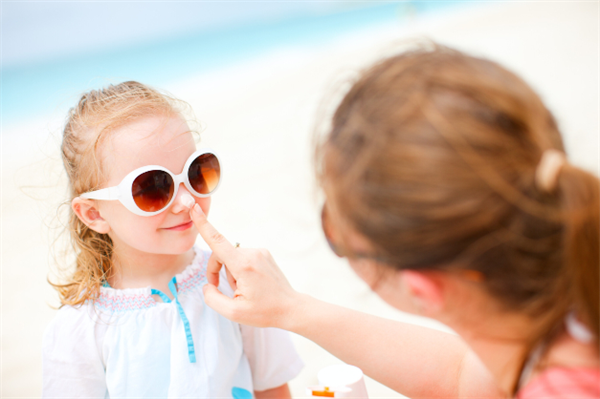Author: Matt Bueby

Summer may be halfway over but protecting your skin and eyes from the sun should continue all year whether we see the sun or not. UV rays can reach you on cloudy and cool days, and they reflect off surfaces like water, cement, sand, and snow. In the continental United States, UV rays tend to be strongest between 10 a.m. and 4 p.m. The UV Index forecasts the strength of UV rays each day. If the UV index is 3 or higher in your area, it is especially important to protect yourself from too much sun exposure.
“We can reduce the risk of sun damage and skin cancer by wearing a broad-spectrum sunscreen with an SPF of 15 or higher that blocks UVA and UVB rays and UVA and UVB wraparound sunglasses, staying in the shade, wearing dark protective clothing or those with UV protection, and by wearing a dark tightly woven wide-brimmed hat,” said Meghana Swamy, MD, family medicine resident at McLaren Flint Family Medicine Residency Group Practice. “When putting on sunscreen, it’s important to pay attention to hard-to-reach places like your back, to reapply every two hours and after swimming, sweating or toweling off, and to check expiration dates.”
Risk factors of melanoma include outdoor and indoor tanning, having a family history of skin cancer, having fair skin and a northern European heritage, and the presence of less atmospheric ozone, which results in a higher level of UV light reaching the earth's surface.
If you have more than 50 ordinary moles on your body, this indicates an increased risk of melanoma. Also, having an unusual type of mole increases the risk of melanoma. Known medically as dysplastic nevi, these tend to be larger than normal moles and have irregular borders and a mixture of colors.
“This doesn't mean you will get melanoma just because you have lots of moles,” said Dr. Swamy. “But it does mean you should be very careful about exposing yourself to the sun. And you should keep an eye on all your moles.”
About 5-10% of melanoma cases are inherited. Parents with a defined genetic mutation have a 50/50 chance to pass on the susceptibility to each of their children regardless of gender, so if you have a parent with a history of melanoma, it’s especially important to protect yourself from the sun and look for changes in moles.
Often the first sign of melanoma is a change in the shape, color, size, or feel of an existing mole. However, melanoma may also appear as a new mole. People should tell their doctor if they notice any changes in the skin. The only way to diagnose melanoma is to remove tissue and check it for cancer cells.
“ABCDE is a good way to help you remember what to look for when assessing whether or not a mole is possibly at risk for being melanoma,” said Dr. Swamy. “These letters stand for asymmetry (one half does not match the other), borders that are irregular, a color that is uneven, diameter increasing, and evolving over time.”
Melanomas can vary greatly in how they look. Many show all of the ABCDE features. However, some may show changes or abnormal areas in only one or two of the ABCDE features. In more advanced melanoma, the texture of the mole may change. The skin on the surface may break down and look scraped. It may become hard or lumpy. The surface may ooze or bleed. Sometimes the melanoma is itchy, tender, or painful.
Along with our skin, we also need to remember that our eyes need protection from the sun, as it may help reduce the risk of cataracts and possibly eye melanoma. The American Cancer Society recommends wearing UV-protected sunglasses when outside in strong sunlight. Wrap-around sunglasses with 99% to 100% UVA and UVB absorption provide the best protection for the eyes and the surrounding skin. This might help reduce the risk of developing cancers of the skin around the eyes. They also reduce the risk of cataracts. The link between sunlight and eye melanomas is not yet proven, but sunglasses may reduce eye melanoma risk.
If you have any moles that are of concern, be sure and consult with your primary care physician. If you need a primary care physician visit mclaren.org/flintappointments.